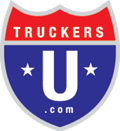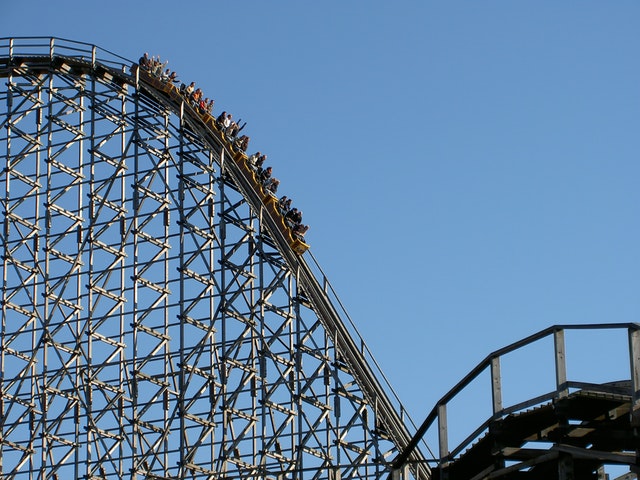by Timothy Brady © 2020
The thought of riding a roller coaster leaves me with memories of the stomach in the throat, white knuckles, sweaty palms, and sheer fear of what’s over the next rise or around the next corner. Kinda sounds like trucking, available freight scraping bottom and freight rates leaving our stomachs in knots—well, like a roller coaster.
What can we do to make of 2020 a little less frightening with the ups and downs of freight, fluctuating fuel prices and all the unknowns both expected and unexpected? If you’re going to do it by the seat of your pants, be sure you’ve cinched the seat-belt snug and grabbed on tightly to the steering wheel, because the economic forecasters are saying we’re in for quite a ride for the rest of 2020 and into 2021. Definitely not a kiddie ride.
ACT Research just released their For-Hire Trucking Index for December 2019 showing improvement in for-hire freight volumes, but also a slide in the Freight Rate Index in December and a slight improvement in the economic outlook for 2020.We see encouraging signs that the freight downturn is in its late stages and the market will rebalance in 2020,” said Tim Denoyer, ACT VP, and, senior analyst. “However, the ongoing rate pressure, even as volumes ramped into the holidays, is symptomatic of ongoing excess industry capacity. Our survey respondents clearly get it, and reduced capacity for a sixth straight month, so we can pretty easily deduce that private fleet capacity additions through year-end 2019 are the main factor continuing to pressure for-hire rates.”

Act is also predicting a modest expansion of 1.8% for the U.S. Economy in 2020. This is based on ACT Research State of the Industry: NA Classes 5-8 report. This report is a monthly analysis of current production, sales and general state of the on-road heavy and medium-duty commercial vehicle markets in North America.
But then, how often are these predictors of the future correct? Sometimes their prognostications turn into self-fulfilling prophesies. But it takes more than turning your attention away for these predictions not to occur. Success doesn’t come from the seat of the pants, ‘follow the wind’ method of doing business. Success comes from good research and then planning based on the results of your investigations. Many say planning is the key, but if you don’t have the correct information from your research, your plan will fail. So the first part of planning is to get the best and most current information as your foundation.
Let’s look at some questions to which you’ll need answers, in order to put your Plan of Action together:
- Look at business from your customers’ viewpoint.
What do they need in shipping services?
What do they want in value add-ons?
What is the projection for their business in the remainder of 2020?
What is the outlook for their industry for 2021? - Look at the economic forecasts for the area and lane you service.
What’s the current unemployment rate for the area?
What portion of the GNP (Gross National Product) does the area contribute?
Is the area in economic growth or decline?
Any new industry slated to begin operations this last half of 2020?
Did any plant closings occur this year?
Any plant closings expected in the near future?
What were the outbound freight numbers for the first half of this year?
How about inbound freight numbers for the same period?
What’s anticipated in those freight numbers for the rest of 2020?
Check for the same information for areas and lanes adjacent to your current service area. - Look at your current and future capacity.
How many loads can you handle per day/week/month with your current equipment?
Is the lane and area you are now servicing able to provide enough loads to meet your equipment’s load capacity?
Are there lanes which are in close proximity that can provide you with the necessary additional tonnage to meet your load capacity?
What potential industries or customers are in your lane or area that you haven’t contacted, but have something you could haul?
What will be your revenue goal for 2020 and how many loads or trips will be required at your current rates to achieve this number?
What can you do to increase the number of loads for the rest of the year?
What will be the capital outlay (how much money will it require), to increase your capacity?
How sustainable will these additional loads be?
What are your worst-case-scenarios, and how will you handle them? - Forecasting your freight hauling sales the last half of 2020 and the first half of 2021:
The trend: are your sales growing, “flat-lining” or in decline?
What seasonal or cyclical factors are typical for products or commodities you haul? (Seasonal and cyclical factors usually occur in a regular pattern.)
How is your availability of loads affected by swings in general economic activity? (e.g., increases in the cost of fuel can lead to a decrease in sales for products in a particular industry, causing a drop in loads for you.)
Erratic events: these include strikes, fashion fads, war scares and other disturbances to the market which need to be isolated from past sales data in order to identify the more normal pattern of sales.
Responses: the results of particular measures that have been taken to increase sales. (e.g., a major marketing campaign to locate new customers.)
What are customers saying about their intentions to continue shipping products for the rest of the year? Is the number of loads going to increase or decrease?
What are customers actually doing in the market?
What have your customers done in the past in the market?
What have they done in the past during similar economic conditions?
As you answer these questions you will see a Plan of Action begin assembling itself. By looking at the past, observing current trends and activities, and anticipating growth, decline, or the flat line of your business, you’re better able to plan.
Keep in mind predicting the future is not really possible. But by watching what’s happening now and what’s happened in the past with similar circumstances, you’re able to make educated guesses of what’s around the next economic bend.
Remember there are many events which we can neither control nor stop from happening, so the best we can do is anticipate; determine worst-case-scenario and have a plan of action already prepared to counter the events’ results. As the old saying goes, “If you don’t have a plan, you have a plan to fail.” But if you develop a plan with incorrect information, it’s like getting on a roller coaster which has failed its safety inspection. The results aren’t pretty.
So, what’s your plan?
© 2020 Timothy Brady

